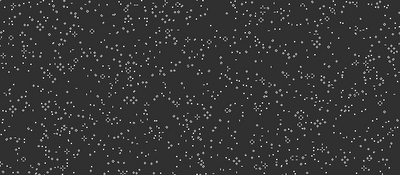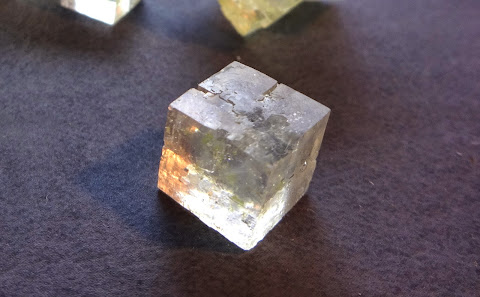Cellular ashes
If we run Conway's Life or other stable cellular automaton on a big random pattern, the field will eventually stabilize, turning to a random soup of stable and cyclic patterns. Such big random pattern is called ash and it is the final of almost every uncontrolled process in the Game of Life.
The ash seems to be very stable, absorbing any other patterns, but it is not actually known, are the really big pieces of ash stable (because in the really big field some kind of really rare "ash eater" can hypothetically born. The universal constructor is possible example of such "eater").
Here is an example of the ash:
 Despite the random nature of the ash, it has some stable properties. The mean density of ash is
Despite the random nature of the ash, it has some stable properties. The mean density of ash is
P = 0.027982 (tested on 3233 x 22681 field).
This constant seems to be one of fundamental characteristics of ash. Other characteristics are densities of elementary stable and cyclic blocks in ash (alas, I do not know them).
And here is something new: The 2D Fourier transform of the ash image (contrasted and resized image of amplitudes):

What does this image shows? I do not understand it yet.
Other life rules produce different images. For example, here is the image for the "High life" ash:

The ash seems to be very stable, absorbing any other patterns, but it is not actually known, are the really big pieces of ash stable (because in the really big field some kind of really rare "ash eater" can hypothetically born. The universal constructor is possible example of such "eater").
Here is an example of the ash:
 Despite the random nature of the ash, it has some stable properties. The mean density of ash is
Despite the random nature of the ash, it has some stable properties. The mean density of ash isP = 0.027982 (tested on 3233 x 22681 field).
This constant seems to be one of fundamental characteristics of ash. Other characteristics are densities of elementary stable and cyclic blocks in ash (alas, I do not know them).
And here is something new: The 2D Fourier transform of the ash image (contrasted and resized image of amplitudes):

What does this image shows? I do not understand it yet.
Other life rules produce different images. For example, here is the image for the "High life" ash:



Comments